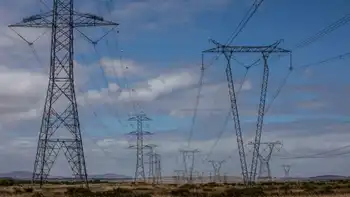Cut your power bills by planting a tree: report
By Electricity Forum
NFPA 70b Training - Electrical Maintenance
Our customized live online or in‑person group training can be delivered to your staff at your location.

- Live Online
- 12 hours Instructor-led
- Group Training Available
A new report by Western Resource Advocates shows how energy use can be reduced and cost savings achieved in cities such as Phoenix, Arizona by implementing shade tree planting programs.
The report “Phoenix Green: Designing a Community Tree Planting Program for Phoenix, Arizona,” provides a blueprint for how communities can establish, fund and manage tree planting programs to reduce electricity consumption. The report draws on the experience of two dozen community tree planting organizations around the country.
“A large-scale tree-planting program in Phoenix would provide enormous benefits, including reducing electricity demand for air conditioning by providing shade to homes and businesses,” said David Berry, the report author and chief of policy analysis for Western Resource Advocates. “To shade Phoenix effectively and in an expeditious manner, we need to plant at least 10,000 residential shade trees per year over the next 10 years.”
The existing urban tree canopy has failed to keep up with the growth of communities in areas of the southwest where air conditioning is a major energy drain. Consequently, urban “heat islands” are increasing both daytime and nighttime air temperatures as paved surfaces and unshaded buildings radiate back the heat they absorb. These hotter conditions increase the energy required for cooling and reduce the livability of cities.
“In addition to saving energy, shade trees can help reduce the urban heat island effect and make our communities more livable, plus provide wildlife habitat and air quality benefits,” said Sandy Bahr, Chapter Director for the Sierra Club’s Grand Canyon Chapter, a partner on the report. “We are especially pleased that this report focuses on planting native desert-adapted trees, which will require less water and will better survive hot summers.”
The addition of 100,000 trees over a decade could reduce annual energy demands by about 14,000 megawatt-hours annually in the Phoenix area. Individual homeowners could see a reduction of 4.6% of their energy use, roughly the amount of energy their refrigerator uses, by having three mature shade trees sheltering the sun-struck sides of their house.
Power companies would benefit from financially supporting tree planting programs because they must constantly work to meet peak energy demands on hot days. Reduced peak demands for electricity would save utilities the cost of additional fuel and reduce the need to construct new generation facilities to reliably meet peak demands.
The benefits to homeowners would be lower electric bills, cooler homes, increased property values, and more livable communities.











